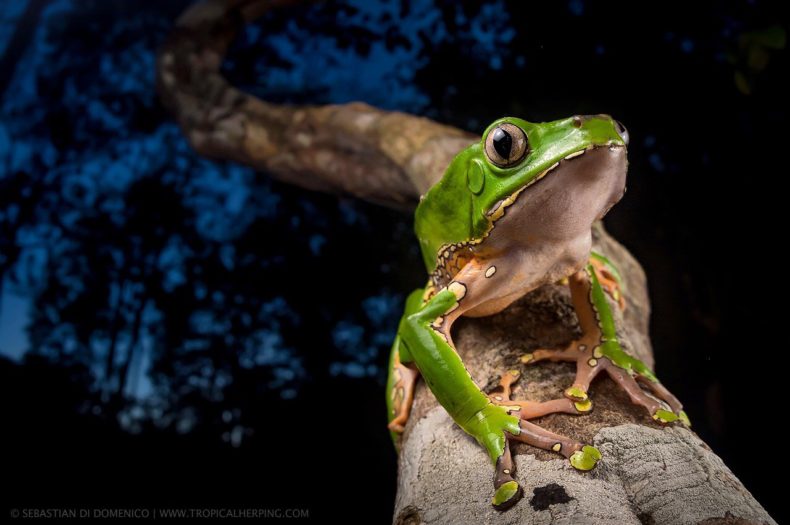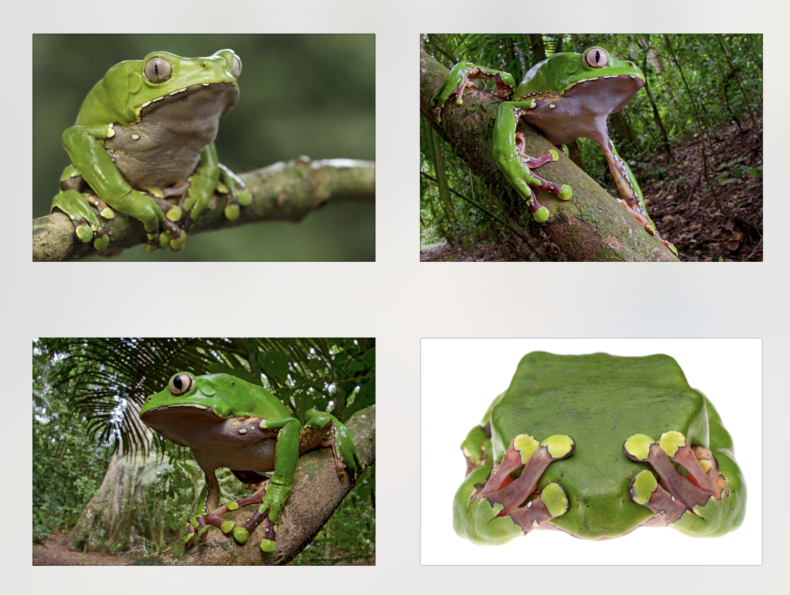
Mammals get all the love.
I get it. Furry things, especially those that like to snuggle and smell like Fritos, make us feel warm inside. I myself hug goats on a farm in my spare time, and I’ve been known to butt in front of small children at the petting zoo. (Don’t judge me—that kid was a whiney brat who deserved to fall down in the snow.)
But some of the life forms I like best come from a very different collection, a line of creatures that slogged to shore about 370 million years ago. You may know them as amphibians. They, like the lobe-finned fish from whence they came, said “No!” to fur and warm blood and social graces. Evolution scooped them up and ran, laughing maniacally, chewing ‘shrooms. Now there are more than 7,000 wild and wacky iterations; 90 percent of those species are frogs (as opposed to toads, salamanders, and the admittedly ugly but apparently motherly caecilians), and all of them awesome.
Still, I can’t help but play favorites. And one of my favorites is definitely This Frog. Phyllomedusa bicolor, the giant monkey frog or bicolor waxy frog or waxy monkey frog or waxy monkey tree frog, depending on how much time you have, is based on a crayon drawing of a muppet by Evolution’s five-year-old son. I love this frowny frog and its ridiculous fingers so much it hurts.
Waxy frogs live in South America, in rainforests, up in the trees. Some never touch the ground: They have an opposable thumb of sorts that gives them the grip of a monkey, good for branch walking and handsy love making. During the rainy season, females lay their eggs along the central vein of a leaf and then fold that leaf over, creating an egg sandwich. They’ll choose a leaf on a low-slung branch above a stream so the tadpoles, when they bust out, fall straight into the water. Pretty smart cookies.

Interesting aside: The eggs of the red-eyed tree frog, also laid over a stream, will hatch prematurely in a sort of Hail Mary if a snake or other predator starts rooting around in the egg jelly. Presumably the vibrations clue them in to the danger. Amazing sensory survival strategy, wouldn’t you agree? I wonder if it happens with This Frog, too. I’m betting yes. Good ideas in evolutionary biology oft get repeated, after all.
Another bit worth sharing about This Frog: The “waxy” in its name comes from the lipid-and-peptide substances the animal secretes from glands behind the eyes to reduce water loss and protect the skin. The stuff is a full-on pharmacy that includes a natural opioid, which probably explains the frog-licking behavior of some humans. (Scientists have studied the secretions of waxy frogs, purportedly used by hunters many moons ago to treat various ills and by shamans in some purification rituals, and have found they contain pain-killing and anti-microbial compounds. Nature’s gifts are the very best gifts.)
Before you go, I insist you watch This Frog fabulously apply that waxy sunblock of its own making all over its little hunched body. Watch to the end, please. If this behavior doesn’t make you want to trade your needy puppy for a low-key ‘phib, or if it doesn’t at least force a big smile, then you and I are no longer friends.
—–
Special thanks to the really nice guys at tropicalherping.com for sharing photos and working so hard to protect my favorite animal family
Wonderful, Jenny! What a special treat to watch the video. Thank you!
I wrote a story about the red-eyed tree frog and its early-hatching eggs once! Development is amazing. https://www.smithsonianmag.com/science-nature/how-the-tree-frog-has-redefined-our-view-of-biology-165716397/
That frog video was a new one on me, and so captivating to watch! CLEARLY, I do not watch enough frogs, or I do not watch them closely enough. What a very cool creature.